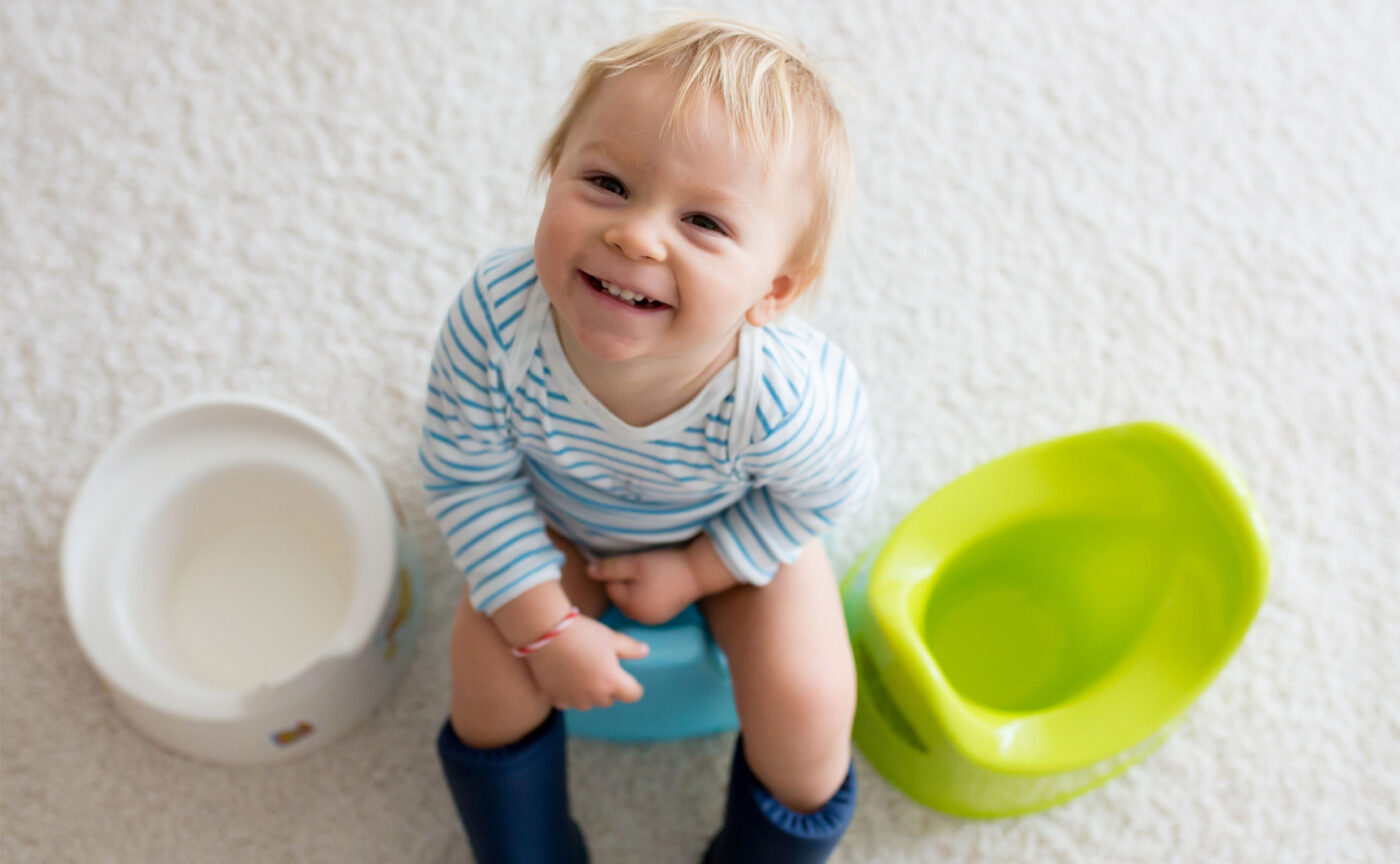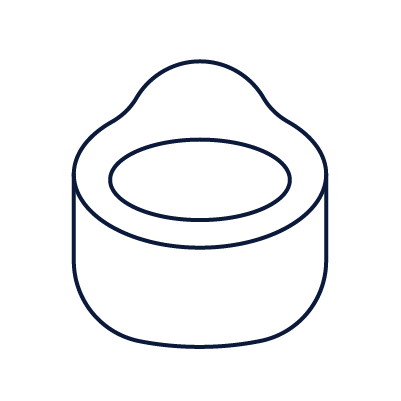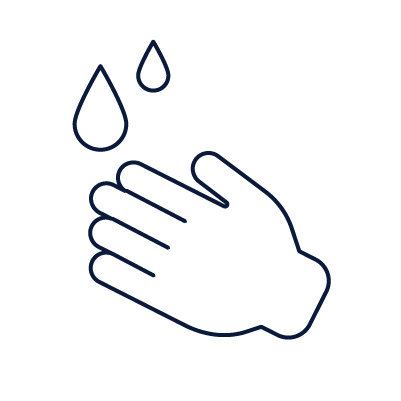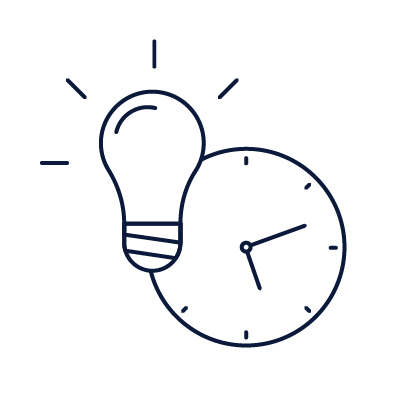Potty training is a significant milestone for parents and babies alike! It is a big step towards independence, and it is common for parents to have loads of questions about how and when to begin the process.
There are a few things that can make potty training a lot easier in the long run. Read on below for our guide on when to start potty training, and some tips to help you approach it in the best way for you and your child.
What is the best age to start potty training?
Children are ready for potty training between about 18 months and three years old. Once they start gaining more control and understanding of their bladder and bowel and are physically able to sit on a potty and get back up unaided, they may be ready to start.
Recent studies have shown that children who start training around two years old are likely to be fully potty trained before turning three. However, if potty training starts before 18 months, then children may not be completely trained until after they are four years old.
Remember that all children are different, and there is no definite age that they should start potty training. Try not to force your child as this can lead to frustration on both sides and sometimes results in regression. To decide when to start potty training, look for signs that they are ready and interested and take it from there.
How to choose the right time for potty training
In deciding when to start potty training, consider if it’s the right time for your child. Try not to introduce potty training when your child isn’t feeling well, is emotionally upset, or is going through a major transition in their life.
Make sure it’s the right time for you too and that everyone is on the same page – all family members, caregivers and nursery staff. It’s no use doing all the hard work only to have someone pop a nappy on your child and take you back to square one without realising it.
Once you start, there’s no going back, so plan around a time when you can establish a routine and give potty training your complete focus. The first few days can be frustrating, but positive reinforcement, consistency and patience will pay off in the long run.
5 signs that your child is ready for potty training
Every child is different so there is no one age or sign that lets parents know when to start with potty training. However, there are a few things to look out for if you’re unsure if now is the right time, these include:
- If your toddler tells you they are either already or are about to wee
- If your toddler acknowledges when they have a wet or dirty nappy and would like to be changed
- If your toddler lets you know they need to go to the toilet by fidgeting or, in some cases, hiding
- Your toddler can sit down and sit still on the potty long enough to use it
- If your toddler knows what a potty is and what it’s used for
10 ways to prepare for potty training your child
10 ways to prepare for potty training your child
Potty training your child is a big step, and the process is likely to be a lot smoother if you’ve put in some groundwork before you begin. To help you along the way here’s a few steps
1. Check for signs your child is ready for potty training
Typical signs your child is ready for potty training include: their nappies being dry for at least an hour, they tell you when they need changing, or they hide behind furniture or start fidgeting when they’re about to poo. Note, girls tend to be ready for potty training earlier than boys, but the readiness signs are the same.
2. Introduce the vocabulary
Use nappy changes to talk about wees and poos. Read books about potty training together and start introducing the idea into your playtime. Buy a doll potty and practice helping dolls and teddies to use it – this will help your child get used to the vocabulary and process in a fun role-play setting.
3. Begin hand washing
Make sure they wash their hands after each nappy change. Getting them used to this process gives you one less thing to introduce during potty training.
4. Buy new underwear and lots of it.
Take your child to buy some underwear. If they choose their own, they’re more likely to be excited about the process and feel proud about the steps they’re taking (just make sure you buy quite a few pairs as you’ll get through them quickly in the beginning!).
5. Pick a potty
Buy a sturdy potty that will properly support your child when they sit on it. Boys generally start off by sitting on the potty for wees too (allowing for less mess and better positioning to empty their bladder completely), but there are little urinals you can buy. Consider having a spare potty for travelling, similar to the one you use at home for consistency (for hygiene, keep it in its own travel bag when you’re not using it).
6. Practice makes perfect
Leave a potty in the bathroom and talk to your child about it. Let them practise sitting on it and perhaps encourage them to sit on it for longer periods during nappy changes to reinforce the association with the process.
7. All aboard?
Make sure everyone is on the same page – all family members, caregivers and nursery staff. It’s no use doing all the hard work only to have someone pop a nappy on your child and take you back to square one without realising.
8. No more nappies
Once you’re all committed, it’s important to ditch nappies at all times other than when your child is sleeping. There will be accidents to start with, but they will decrease over time.
9. Identify your potty stops.
Wherever you put your potty/potties, make sure your child knows exactly where they will be when they need them. You don’t want a race around the house searching for a potty when it’s time for them to go!
10. Time and remind
In the first few weeks, remind your child to use the potty every 20–30 minutes. It’s easy to lose track of these intervals, so it’s a good idea to set timers to keep you focused. Making a point of encouraging your child to sit on the potty this frequently will help lessen the chance of accidents happening. Make sure you’re especially alert after your child has had a drink or a snack.
Top tips for starting potty training
Firstly, remember that wees are generally easier to master on the potty than poos. If your child tends to poo at a regular time each day, you can try leaving their pants off around this time and sitting them on the potty as soon as you notice them having the urge to go. If they get upset, don’t force it, just try again the next day. Some children like to sit for a while on the potty with a book or toy to distract them.
If your child has a stool that hurts, it may make them anxious. You can massage their tummy in clockwise circles to help stimulate their muscles or ask them to rock backwards and forwards to try and move things along. Another technique is pretending to blow bubbles or blow candles out – this can release the tension in their muscles. However, avoid telling them to push as this could cause further issues.
Top tip: Dress your child in just pants and a T-shirt at home so there are no unnecessary layers for them to worry about getting out of in a hurry.
How to be dry at night
Once your child is fully dry during the day, it’s time to concentrate on the nights. If their nappy is dry or only slightly wet when they wake in the morning, they’re ready for night-time training.
Limit your child’s drinks before bedtime and introduce using the potty just before bed to their evening routine.
It’s a good idea to keep the potty beside their bed to start with – you can use a waterproof pad beneath it to minimise night-time spills. A waterproof sheet underneath their regular sheet will protect your child’s mattress if there are any accidents overnight.
At the beginning of night-time training, you might want to lift your child onto the potty as you’re going to bed each evening. This is sometimes known as a ‘dream wee’. They might wake briefly but they’ll normally go back to sleep quite quickly. In the morning, have your child use the potty as soon as they wake up.
Top tip: Popping an extra sheet beneath the waterproof layer will make any middle-of-the-night bed changes a little easier, you can strip off the wet layers, and there’s a ready-made bed beneath!
Should you reward potty training or not?
This question comes down to how your child best responds. Some experts believe that rewarding a child with stickers or toys is a short-term motivator. If you are going to use something like a reward chart, it’s important to be consistent and ensure that the reward is immediate and linked purely to your child’s potty training and no other behaviours or tasks. Be aware that if your child is also attending another setting like a nursery, it’s unlikely that they will use the same reward system which may be confusing for your child.
How to potty train children with additional needs
Some children with additional needs or disabilities may find it more challenging to use the potty or toilet. According to ERIC, The Children’s Bowel and Bladder Charity, even though it may be more challenging it is best not to delay potty training for too long as it becomes more difficult to master as they get older. By monitoring the level of dryness between wet nappies you can get an indication of whether your child is ready to start training. More information is available on the Eric website.
Deciding when to start potty training is a big step for children and parents and it can seem like a daunting process but you’ll get there. At N Family Club, our teams are also there with your child to support them through this learning process.










